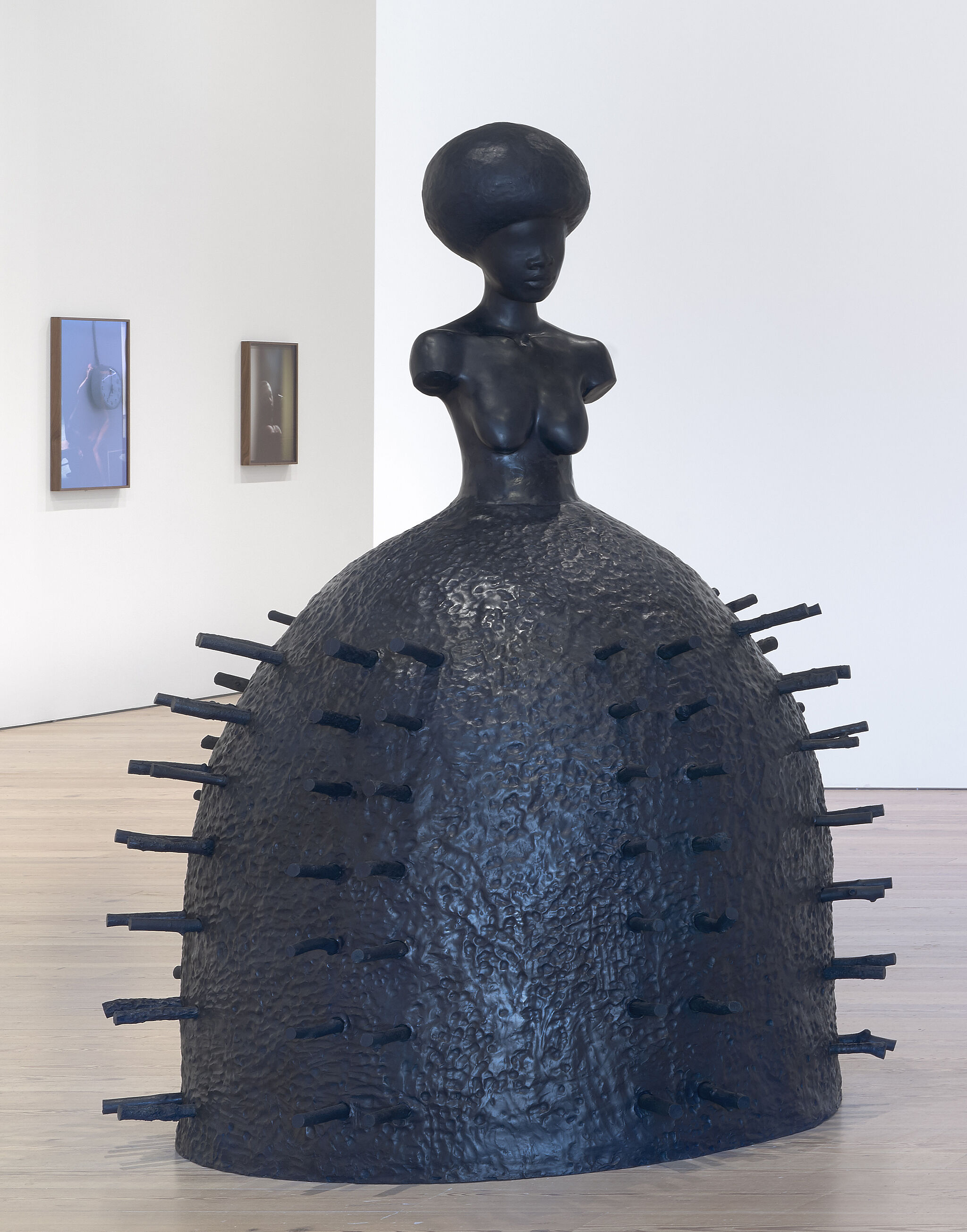Whitney Biennial 2019 | Art & Artists
May 17–Oct 27, 2019
Whitney Biennial 2019 | Art & Artists
Simone Leigh
43
Floor 5
Born 1967 in Chicago, IL
Lives in Brooklyn, NY
Simone Leigh developed the visual language of her sculptures from a wide variety of sources, including the art of ancient Egypt, traditional West African adobe structures, American vernacular architecture, and craft—including, in some cases, racist forms stemming from the Jim Crow era. As Leigh’s complex and contradictory sources would suggest, the female figures resist being reduced to a sum of their parts. Multifaceted and inward-gazing, they are conceived with Black women as their primary audience.
A trained ceramist who has long engaged with radical Black feminist thought, Leigh has fashioned a multivalent response to outmoded notions of the female body as a vessel. Using sensuously textured materials—here, ceramic and bronze—she examines ways in which objects embody and communicate specific cultural traditions and histories through both material and form.
Stick, 2019
-
0:00
Simone Leigh
0:00
Rujeko Hockley: Leigh is interested in forms rooted in the African and African American experience, specifically thinking about experience and cultural traditions.
Narrator: Biennial co-curator Rujeko Hockley.
Rujeko Hockley: Particularly thinking through female subjectivity and Black feminism, questions of labor, beauty, utility, and agency. In the works that you’re seeing in the galleries, which are ceramic sculptures plus two large bronze sculptures, Leigh is drawing on references including West African sculpture and architecture, particularly adobe homes and structures built in that part of the world, world’s fairs of the early part of the twentieth century, specifically a cafe in Mississippi called Mammy’s Cupboard, in which a woman’s skirt encased the structure that people would enter through, with at the top of it a Black woman in a kind of mammy costume. So in an effort to overturn these stereotypical images as well as to overturn this idea of Black women being used in service of other people, Leigh uses this form here in her two sculptures, Corrugated Lady and Stick, creating these large skirts on top of which the figures, the busts of the women sit.

